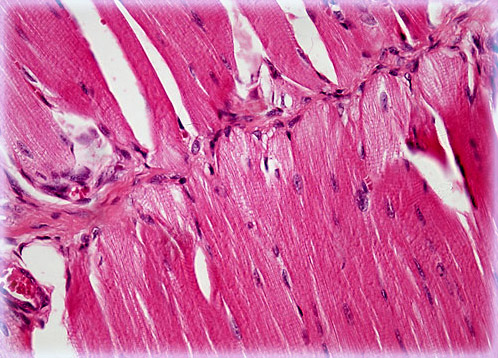Modern microscopes can be roughly divided into three main types: visible light, fluorescence, and electron, all sharing similar basic principles.
The field of microscopy, and its chief instrument the microscope, have both a venerable and controversial origin. Antonie van Leeuwenhoek is credited with bringing the microscope into the realm of biology, and it took 150 years before the compound microscope was embraced with widespread biological use.
Microscopy has come a very long way, with technological leaps in the range of sizes, substances, and spaces that can now be observed. Modern microscopy has pushed the boundaries of what we know about the physical world, and has allowed us to peer ever deeper into such tiny worlds as virus structure and assembly, cardiac cell function, and the fine structure of fossils, to name a mere few.
What are the main components of a light microscope?
Starting with the light microscope, the eyepiece, or ocular lens, is a cylinder with two or more lenses that function to bring the viewed object into focus. The magnification can range from 5-20X, and it is matched with the optical configuration of the objective in high performance devices. The objectives are the main lenses which perform magnification of the specimen. These are characterized by two parameters, magnification and numerical aperture, which is an implicit measure of the ability of an objective to gather light and resolve fine specimen detail at a fixed object distance.
Other components include the focus knobs, the stage (to which the specimen is mounted), and the frame (to which the stage is fixed). The stage has an aperture to allow light to pass through, moving up and down in response to focusing. Illumination is in the form of an adjustable halogen lamp, although LEDs and lasers are becoming more common. Many techniques can be used to modify the light and improve the contrast of the sample image, which include but are not limited to, cross-polarized light, dark-field, and phase-contrast.
How does a light microscope image specimens?
Brightfield imaging is one of the most widely used observation modes in optical microscopy. It is best suited for utilization with fixed, stained specimens or others that naturally absorb significant amounts of visible light. Images produced with brightfield illumination appear dark and/or highly colored against a bright, often light gray or white, background. This technique can be used to view live cells as well and since many organic specimens are transparent or opaque, staining is required to cause the contrast that allows them to be visible under the microscope.
What new technologies for light microscope imaging are available?
Although Brightfield microscopy is a basic method, it is also a technique that is well suited for mating with new technologies. Digital imaging systems can make high resolution images of properly stained microorganisms using this technique. Three-dimensional imaging accessories can be used with the brightfield method and newer technologies will allow real time viewing in 3D. Brightfield is also suitable for video imaging, and this enhancement allows the user to view motile organisms interacting with their environment.
The Brightfield technique has also been coupled with cell imaging software to better perform tasks previously delegated to fluorescence microscopy. By using multiple focal levels the cell borders and nuclei can be located in cell populations. The benefit of using brightfield illumination for this task is that it frees fluorescent channels in microscopes and eliminates distortions caused by the overlapping of the color emissions of the stains and the excitation of the fluorescing materials.

Shown here is a stained specimen of mammalian cardiac muscle tissue captured with an Olympus BX51 microscope coupled to a 12-bit QImaging Retiga camera system and a three-color liquid crystal tunable filter. (Credit Olympus Microscopy Resource Center)
The diagnosis and treatment of disease has been a foundation of medicine from the beginning. A significant aspect of our understanding about disease progression has come from our ability to dissect and image tissue in the course of pathological investigations. Advances in light microscopy have allowed physicians to routinely examine tissue samples and compare landmark signs of disease with normal tissue. The technology and equipment have improved dramatically, and the practice is one that has stood the test of time – although automated microscopes now handle the workflow in high capacity diagnostic labs.
In a subsequent post we will discuss the different light microscope platforms, accessories, and add-ons.
Read on in the following posts:
Fluorescence Light Microscopy: Technical Insights and Applications
Progress in 3-D Imaging Microscopy and Brain Mapping
Immunoreagents and Emerging Applications in High-Resolution Imaging and Microscopy
Forging the Path of the Imaging Resolution Revolution
Ultra-High Resolution Imaging: The New Benchmark in Molecular Microscopy










